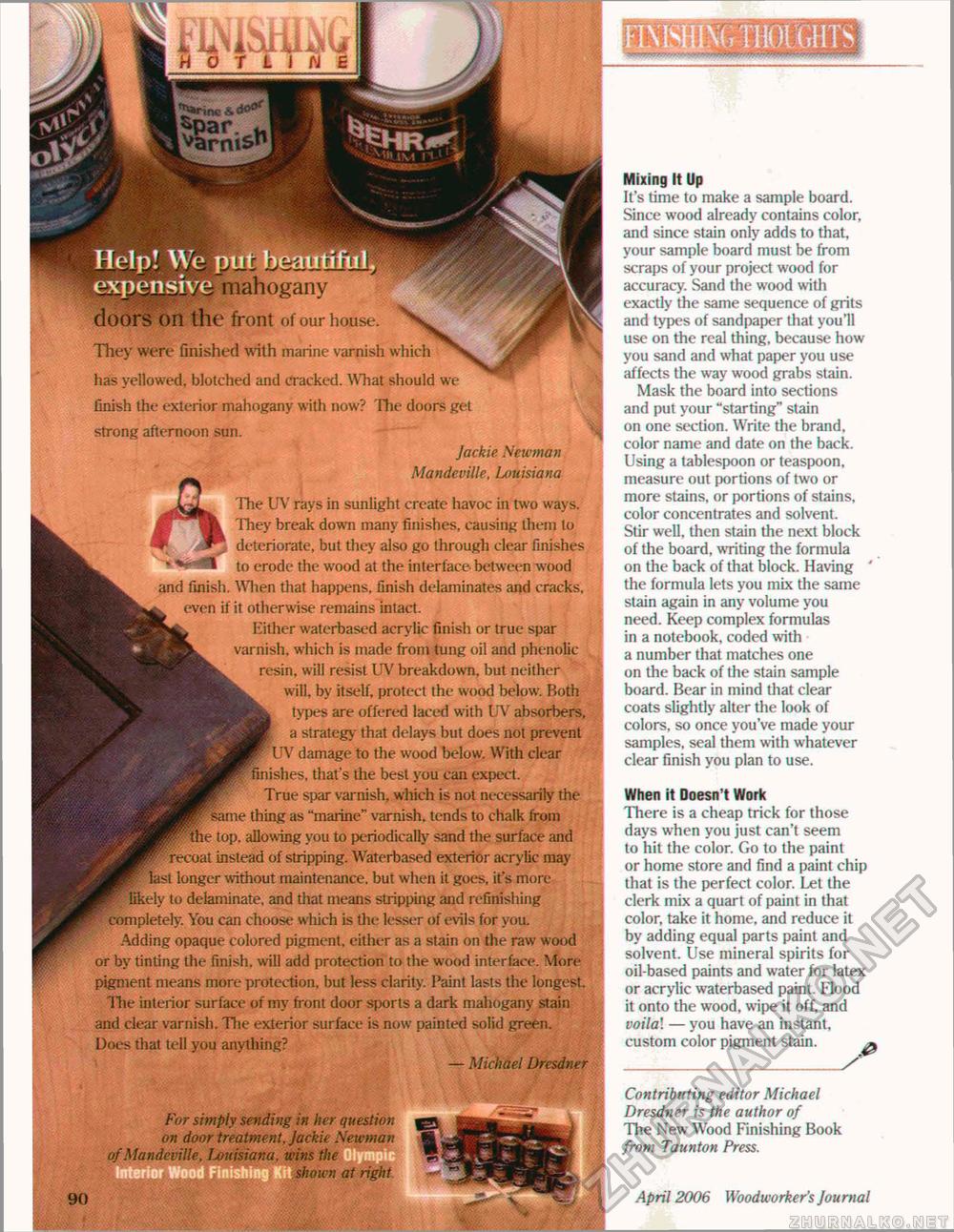Woodworker's Journal 2006-30-2, страница 90
expensive ivauiizi lahogany doors on the front of our house. They were finished with marine varnish which has yellowed, blotched and cracked. What should we finish the exterior mahogany with now? The doors get strong afternoon sun. Jackie Newman Mandeville, Louisiana The UV rays in sunlight create havoc in two ways. They break down many finishes, causing them lo deteriorate, but they also go through clear finishes * to erode the wood at the interface- between wood and finish. When that happens, finish delaminates and cracks, even if it otherwise remains intact. Either waterbased acrylic finish or true spar varnish, which is made from tung oil and phenolic-resin, will resist UV breakdown, but neither will, by itself, protect the wood below. Both types are offered laced with UV absorbers, a strategy that delays but does not prevent UV damage to the wood below. With clear Finishes, that's the best you can expect. True spar varnish, which is not necessarily the ^ same thing as "marine" varnish, tends to chalk from the top. allowing you to periodically sand the surface and Wr recoat instead of snipping. Waterbased exterior acrylic may * last longer without maintenance, but when it goes, it's more W likely to delaminate, and that means stripping and refinishing completely. You can choose which is the lesser of evils for you. Adding opaque colored pigment, either as a stain on the raw wood or by tinting the finish, will add protection to the wood interface. More pigment means more protection, but less clarity. Paint lasts the longest. The interior surface of my front door sports a dark mahogany stain and clear varnish. The exterior surface is now painted solid green. Does that tell you anything? — Michael Dresdner For simply sending in her question on door treatment, Jackie Newman of Mandeville, Jjouisiana, wins the shown at right Mixing It Up It's time to make a sample board. Since wood already contains color, and since stain only adds to that, your sample board must be from scraps of your project wood for accuracy. Sand the wood with exactly the same sequence of grits and types of sandpaper that you'll use on the real thing, because how you sand and what paper you use affects the way wood grabs stain. Mask the board into sections and put your "starting" stain on one section. Write the brand, color name and date on the back. Using a tablespoon or teaspoon, measure out portions of two or more stains, or portions of stains, color concentrates and solvent. Stir well, then stain the next block of the board, writing the formula on the back of that block. Having ' the formula lets you mix the same stain again in any volume you need. Keep complex formulas in a notebook, coded with a number that matches one on the back of the stain sample board. Bear in mind that clear coats slightly alter the look of colors, so once you've made your samples, seal them with whatever clear finish you plan to use. When it Doesn't Work There is a cheap trick for those days when you just can't seem to hit the color. Go to the paint or home store and find a paint chip that is the perfect color. Let the clerk mix a quart of paint in that color, take it home, and reduce it by adding equal parts paint and solvent. Use mineral spirits for oil-based paints and water for latex or acrylic waterbased paint. Flood it onto the wood, wipe it off, and voilal — you have an instant, custom color pigment stain. Contributing editor Michael Dresdner is the author of The New Wood Finishing Book from Taunton Press. 90 April 2006 Woodworker's Journal |








